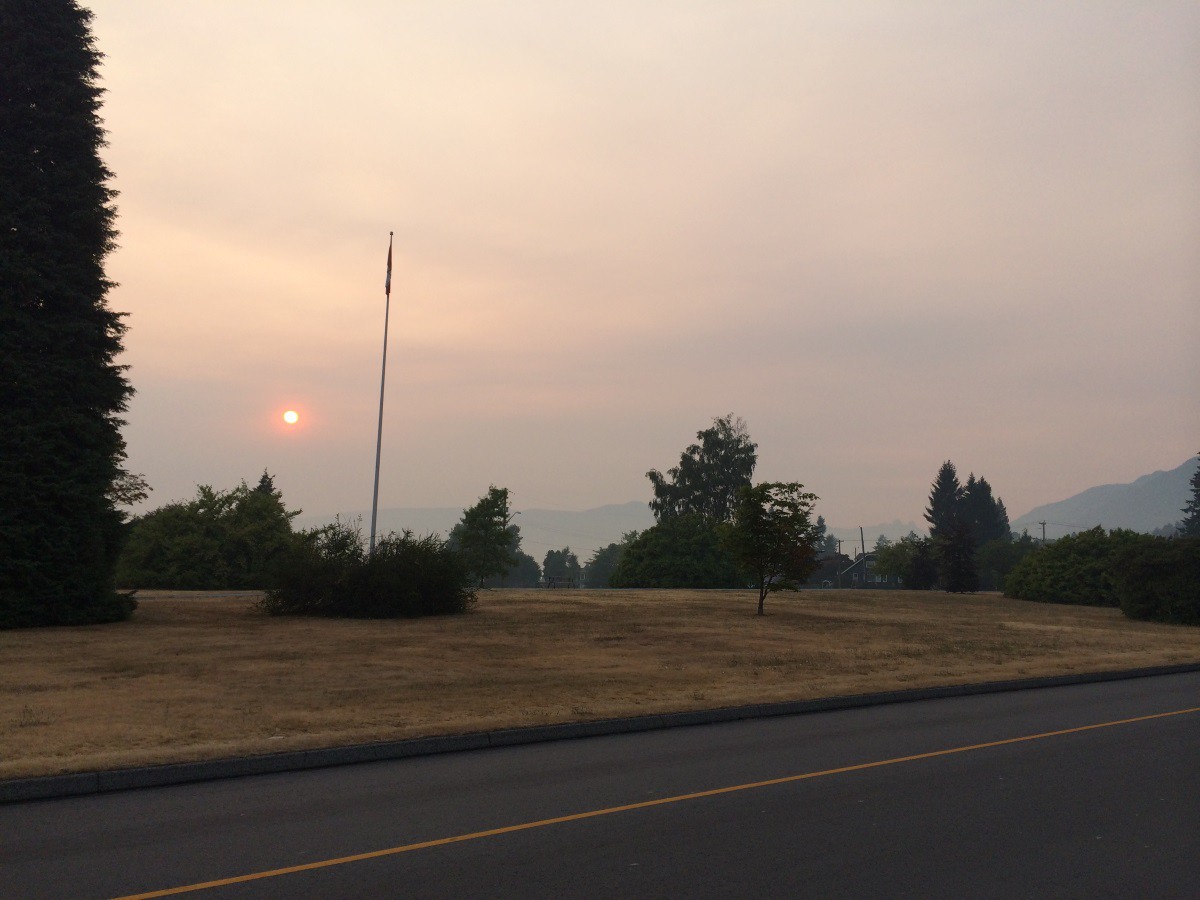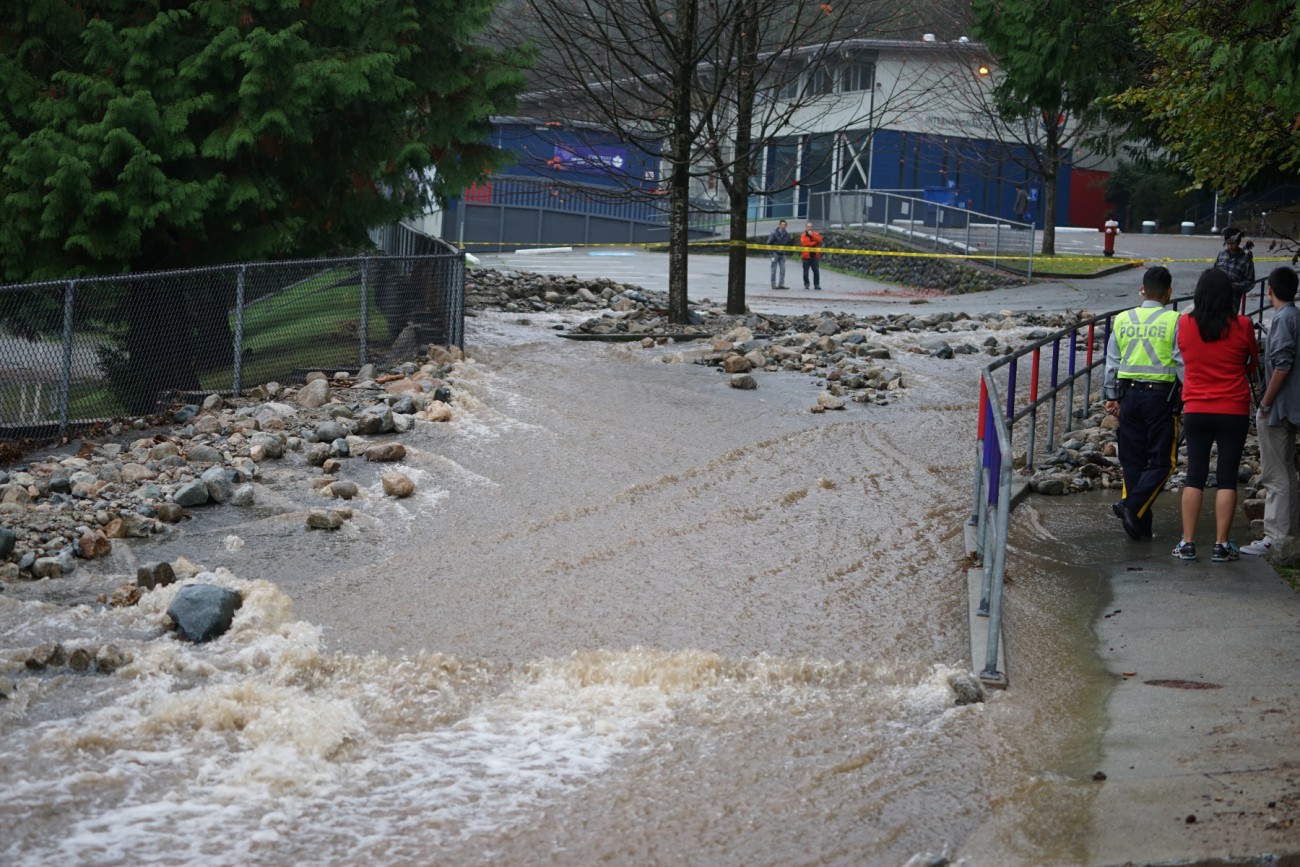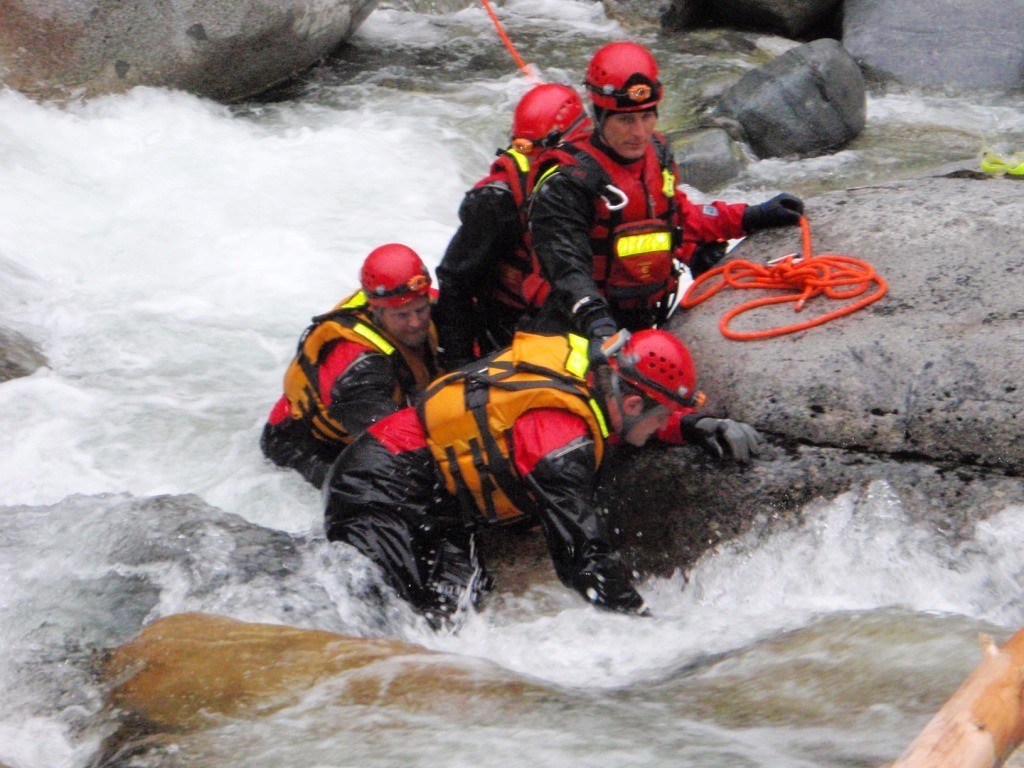Climate Change Adaptation Strategy
Our Climate Change Adaptation Strategy will help us respond to the social, economic, and environmental impacts of climate change.
Integrating new science and regional best practices, the strategy will support and inform our other key programs and plans — including the Official Community Plan, Transportation Plan, and Parks and Open Spaces Strategic Plan — helping make our communities adaptive and resilient in the face of our changing climate.
The Climate Change Adaptation Strategy was adopted by Council on July 24, 2017. Download the final strategy document
Details
Developing a formal strategy to address climate change
To reduce the personal, financial, and environmental costs of climate change, we need to take a two-pronged approach:
1. Mitigate — Prevent future climate change from happening, by reducing our greenhouse gas emissions
2. Adapt — Become more resilient by preparing and responding to climate change
A strategy based on science and best practices
Our planning process is being guided by ICLEI's (International Council for Local Environmental Initiatives) BARC program. This is a national program that focuses on community resilience and adaptation.
BARC supports communities, and helps them prepare for climate change. Other municipalities who are using BARC include:
Learn more about ICLEI and BARC
The steps we followed to create our strategy
We followed a carefully planned five-step process to develop our climate change adaptation strategy, which we will continue to update as new science becomes available.

Step 1: Initiate
In this step, we began adaptation planning. To do this, we:
- built an interdepartmental team
- identified key stakeholders
- reviewed the current science
- identified existing District climate adaptation plans and policies
Step 2: Research
In this step, we identified priority climate change impacts specific to the District. To do this, we:
- conducted climate research
- identified climate change impacts
- conducted risk and vulnerability assessments
The risk and vulnerability assessment helped us prioritize climate change impacts, which we'll use to help focus our planning efforts.
Here are the top impacts we identified:
| Priority | Impact | Cause |
|---|---|---|
| 1 | Delayed delivery of important municipal services | More staff responding to and recovering from more frequent and severe storms |
| 2 | Increased damage to public, private, and recreational property | More frequent and severe fires, windstorms, invasive plants and insects, floods, erosion, landslides, droughts |
| 3 | Increased damage to infrastructure, such as buildings, park facilities, water/sewer systems | More frequent and severe landslides, floods, fires, invasive plants and insects, erosion, windstorms |
| 4 | More power outages | Damaged or downed power lines from severe windstorms |
| 5 | Poorer air quality | More frequent and severe fires due to warmer, drier weather |
| 6 | Loss of forests/tree canopy (with increase in landslides and debris flow) | More frequent and severe fires due to warmer, drier weather |
| 7 | Reduced water supply to fight fires | More frequent and severe droughts due to reduced summer rain and winter snowpack |
| 8 | More heat related health impacts | More frequent and severe heat waves |
| 9 | Reduced native biodiversity | Significant spread of invasive plants and insects, due to warmer, drier weather |
| 10 | Decreased quality and quantity of foreshore ecosystems | Increased coastal floods, erosion, saltwater intrusion, and storm surges, due to sea level rise |
Step 3: Plan
In this step, we developed the actual strategy. This work included:
- developing actions and goals to address priority climate change impacts
- developing actions specific to our needs
- integrating actions into current operations and day-to-day work plans
- preparing for ongoing review and refinement
How we developed the plan
These are the steps we took to develop this plan
July 24, 2017 — Strategy adopted by Council
Staff presented the final draft strategy to Council, with a recommendation that it be adopted. Following the presentation and discussion, Council voted to adopt the strategy.
View the staff presentation, report with recommendations, and draft strategy in the 'Documents and resources' tab.
April 27, 2016 — Presentation to Parks and Natural Environment Committee (PNEAC)
Staff updated PNEAC on the development of the Climate Adaptation Strategy.
April 21, 2016 — Presentation to regional partners
Staff presented at Metro Vancouver's Sustainability Community Breakfast meeting, which was focused on building awareness of climate change adaptation initiatives in the region, and on developing networks and partnerships.
March 9, 2016 — Attended the "BeAware" fair
Staff attended Handsworth Secondary's BeAware fair, where they talked to elementary and secondary students about climate change and how it might be affecting them, their families, and their community.
December 7, 2015 — Presentation to Council
We updated Council on the progress we've made so far in the development of the new strategy.
December 1, 2015 — Workshop presentation
Staff attended the "Feast AND Famine: Solutions and Tools in Response to a Changing Climate in BC" workshop, where they presented our approach to developing a climate adaptation strategy.
September, 2015 — Second ICLEI Canada award
We received a Milestone 2 award from ICLEI Canada in recognition of our work to complete the second step of their process to develop a climate adaptation strategy. You can read an overview of what actions Step 2 included, and learn more about ICLEI, in the Details tab.
June 9, 2015 — First ICLEI Canada award
We received a Milestone 1 award from ICLEI Canada in recognition of our work to complete the first step of their process to develop a climate change adaptation strategy. You can read an overview of what actions Step 1 included, and learn more about ICLEI, in the Details tab.
November, 2013 — Presentation to Council
Council was briefed on the approach we're using to develop a Climate Adaptation Strategy as part of the implementation of our Official Community Plan. There is a link to the staff report in the Documents and Resources tab.
Documents and resources
Final strategy
Download the final Climate Change Adaptation Strategy document
Related Council documents
July 24, 2017
In July, 2017, Council voted to adopt the draft strategy.
- Review the staff report with recommendations and draft strategy (starts on page 285)
- View the staff presentation to Council
November 25, 2013
On November 25, 2013, Council was briefed on the development of a Climate Adaptation Strategy as part of the implementation of our Official Community Plan.
Related projects
The strategy will integrate climate change into many District programs and policies, including:
- Official Community Plan (OCP)
- Parks and Open Space Strategic Plan
- Transportation Plan
- Integrated Stormwater Management Plan
- Natural Hazards Management Program
Learn more about climate science with these tools
The Pacific Climate Impacts Consortium has created a "Plan2Adapt" tool, which we use to estimate the changes we can expect to face in the future as the planet continues to warm.
NASA's easy to understand "Global Climate Change" website provides a comprehensive review of the evidence, causes, and effects of climate change.
Visit NASA climate change website
The Pacific Institute for Climate Solutions offers a series of free, interactive online courses, called "Climate Insights 101," that offer a simple, non-technical look at the science behind climate change.
Visit the Climate Insights 101 website
Learn how a municipal government can plan for the impacts of climate change, in this interactive game from the Globe & Mail newspaper.
Background
We're already feeling the effects of climate change...

During 2014-2015, we had:
- heavy rainfall and flooding
- reduced reservoir levels due to limited snow
- level three water restrictions and drought
- record-setting summer temperatures
- more frequent forest fires and air quality advisories
... but by 2050, things will be worse

As greenhouse gas levels continue to rise, we can expect more changes in our climate.
By 2050, we expect:
- air temperatures will be two degrees warmer
- summers will be drier, and winters wetter (but with less snow)
- extreme heat and precipitation will be more frequent
- sea levels will be a half metre higher
The social, economic, and environmental impacts of a changing climate
As the planet continues to warm — and we experience more extremes of temperature and precipitation — our environment, our health, and even our economy, will be affected.
Impact on North Shore residents
If you live on the North Shore, you can expect climate change to impact your quality of life in a number of ways:
- Your personal health and safety could be compromised
- Highly valued recreation areas will be damaged
- The quality and quantity of our water will go down
- There will be damage to personal property and public amenities
Impact on local governments

Meanwhile, our changing climate will lead to unique challenges for local governments, as well:
- It will be more difficult for us to maintain our current operations
- Our staff priorities will be redirected to dealing with emergency response
- Local natural hazards will be more challenging to manage
- Our spending to maintain public assets (facilities, infrastructure, parks, and so on) will increase
Impact on the environment
Finally, climate change will alter our local environment. We can expect the loss or damage of:
- our native biodiversity
- our foreshore areas
- ecosystem services (benefits provided by ecosystems that make human life possible)
What have we done about climate change so far?
We have already taken a number of steps to help us adapt to our changing climate. We have created:
- natural hazards risk assessments
- natural hazard management plans and implementation strategies
- hazard and environment development permit areas
- development standards for buildings, infrastructure, and utilities
- long-term (40-50 year) asset management framework
It's time for a complete strategy
But while we have done significant work to help us adapt to climate change, we need an overall strategy to help us effectively coordinate all of our actions, identify current gaps in our approach, and to help us implement our Official Community Plan.
Reaching our climate action and environmental health goals
We're taking action in six key areas to reduce greenhouse gas emissions, protect and enhance ecosystem health and biodiversity, and improve our resilience to climate change.